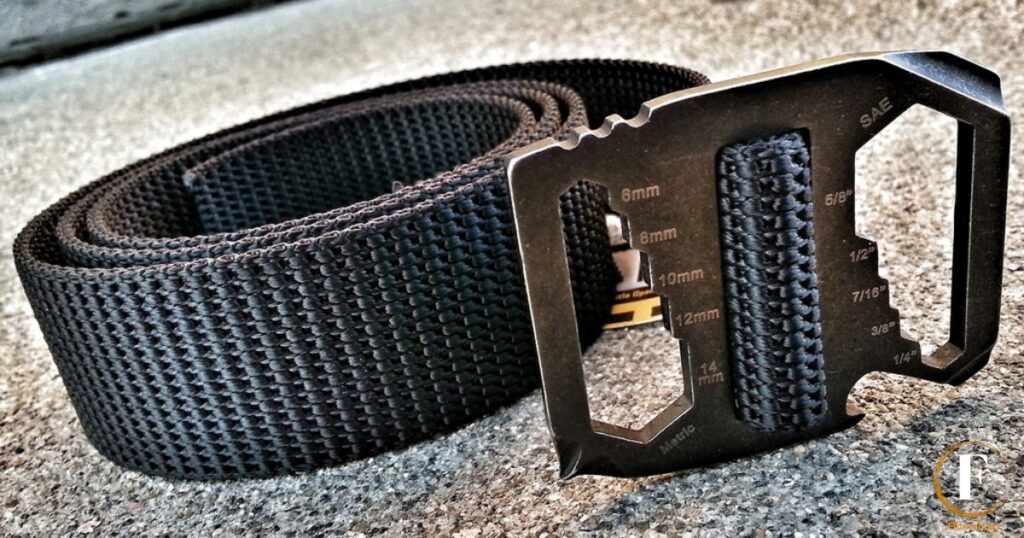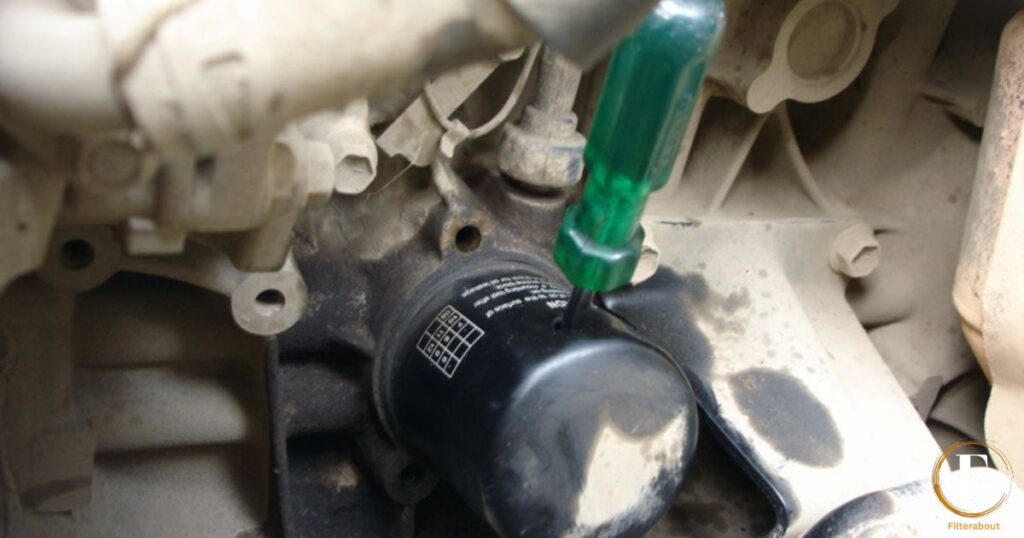An oil filter without wrench is a tool-free solution for removing and replacing car oil filters. It allows for easy maintenance by hand simplifying the process of changing oil and promoting user-friendly vehicle care.
Struggling with a stubborn oil filter Discover the easy way to remove it without a wrench. In this quick guide on How to Take off Oil Filter without Wrench? You’ll learn a hassle-free technique to get the job done smoothly. Say goodbye to the frustration and make oil filter Without Wrench removal a breeze.
No wrench No problem to remove an oil filter without wrench first ensure the engine is cool. Then use a sturdy oil-resistant cloth to grip and twist the filter counterclockwise. It’s a simple trick for a tool-free solution.
Hands-On Techniques for Oil Filter Removal
Hands-on techniques for oil filter without wrench removal are essential skills for any DIY car enthusiast or mechanic. One common method involves using a traditional oil filter wrench a tool specifically designed to grip and turn the filter with ease.
These wrenches come in various sizes and styles to accommodate different filter types making them a versatile option for most vehicles. However, some situations may arise where a filter is tightly stuck or there’s limited space making the removal process challenging.
In scenarios where a conventional oil filter Struggling with a stubborn oil filter discover the easy way to remove it without a wrench. In this quick guide on How to Take off Oil Filter without Wrench? You’ll learn a hassle-free technique to get the job done smoothly.
Say goodbye to the frustration and make oil filter Without Wrench removal a breeze. wrench is not available or practical, alternative hands-on techniques become crucial. One effective method is the use of a screwdriver and hammer.
By carefully driving the screwdriver through the body of the oil filter and using it as a lever, one can gain the necessary leverage to turn and loosen the filter. This technique is especially useful when dealing with filters that have become tightly fused over time.
Another hands-on approach involves using a heavy-duty rubber strap or a section of an old bicycle tire inner tube. Wrapping the strap around the filter and applying rotational force can provide the grip needed for successful removal.
For those facing a situation without access to a traditional oil filter wrench, the oil filter without wrench challenge can be overcome with resourcefulness.
The screwdriver and hammer method or the rubber strap technique can prove effective in these instances showcasing the importance of mastering diverse removal techniques for different scenarios. Having a repertoire of hands-on skills ensures that individuals can tackle oil filter removal successfully, even in less-than-ideal conditions.
Loosen the Filter Using a Rubber Strap

Loosening a stubborn oil filter without wrench can be a challenging task especially when it refuses to budge by traditional means. One effective and accessible method to overcome this hurdle is by using a rubber strap.
This versatile tool often referred to as a rubber strap wrench provides a strong and non-slip grip on the filter, allowing you to apply the necessary torque without damaging the filter or risking injury. The flexibility of the rubber strap enables it to adjust to different sizes and shapes of filters, making it a practical solution for various vehicles and equipment.
When faced with an oil filter loosening a stubborn oil filter without wrench can be a challenging task especially when it refuses to budge by traditional means. One effective and accessible method to overcome this hurdle is by using a rubber strap.
That won’t yield to conventional wrenches the rubber strap wrench proves to be an invaluable ally. Its design ensures a secure hold on the filter casing, preventing slippage and minimizing the chances of rounded edges or dents.
This tool is particularly handy when dealing with tight spaces or filters located in awkward positions where a traditional wrench might struggle to reach. By opting for a rubber strap wrench, users can efficiently and safely tackle the challenge of loosening an oil filter without wrench the need for a specialized oil filter wrench.
The rubber strap technique is particularly advantageous when attempting to handle an oil filter without a dedicated wrench. In situations where an oil filter wrench is unavailable, using a rubber strap, 5.7 Hemi generates a makeshift yet highly effective alternative.
This method proves to be a cost-effective solution as rubber strap wrenches are widely accessible and affordable making them a practical choice for DIY enthusiasts and professionals alike.
So the next time you find yourself in a pinch without a specific oil filter with a wrench consider reaching for a rubber strap wrench to effortlessly loosen that stubborn filter and get back to maintaining your vehicle’s essential components.
Create A DIY Oil Filter Removal Tool
Here are 7 steps to create a DIY oil filter removal tool.
- Select a Metal Canister: Choose a metal canister that fits over the oil filter without wrench you plan to remove. Ensure it is sturdy and appropriately sized for the task.
- Cut the Canister: Using a metal saw, carefully cut the canister to form a cylindrical shape. Leave one end open and close the other end securely.
- Create Notches: With the open end facing outward, use the metal saw to create evenly spaced notches around the circumference. These notches will act as teeth to grip the oil filter.
- Shape for Grip: Consider the size and shape of the oil filter, adjusting the notches as needed. This ensures a snug fit and effective grip when removing the filter.
- Wrap with Material: Enhance the grip further by wrapping the notched end with a material that provides traction. Rubber or leather works well for this purpose.
- Attach a Handle: Securely attach a handle to the closed end of the tool. This can be a separate piece of metal or a pre-made handle, ensuring it is firmly fixed for ease of use.
- Test and Adjust: Before using the tool on an actual oil filter, test it on a mock setup to ensure it grips effectively. Make any necessary adjustments to the notches or handles for optimal performance.
By following these steps you can create a simple yet effective DIY oil filter removal tool using readily available materials.
Using a Belt

Using a belt is a common practice in various aspects of our daily lives providing a versatile and practical solution for a range of tasks. One of the most prevalent uses is in the world of fashion where belts are worn to secure clothing and create a polished look.
Whether it’s holding up a pair of pants or cinching a loose-fitting dress a belt serves both functional and aesthetic purposes. Belts find utility in the industrial sector, where they are employed to transfer power between rotating shafts driving machinery and facilitating various mechanical processes.
In automotive maintenance belts play a crucial role in powering essential components like the alternator water pump, and air conditioning compressor. Regular inspection and replacement of these belts are essential to ensure the smooth operation of a vehicle.
On the other hand, dealing with specific tasks such as removing an oil filter without wrench may require a different approach. In such cases utilizing a belt as a makeshift tool can provide the necessary grip and torque to loosen the filter offering a quick and effective solution in the absence of specialized tools.
It’s important to note that while belts can serve as improvised tools having the right equipment for specific tasks is always preferable. When facing challenges like removing an oil filter without wrench investing in the appropriate tools ensures a more efficient and safer process.
However, in emergencies or when access to proper tools is limited improvising with a belt can be a handy solution. As with any DIY approach caution and expertise are advised to prevent damage or injury during the execution of such tasks.
Tap with A Hammer
| Step | Information |
| 1 | Objective The primary goal is to use a hammer to tap or strike an object, typically to drive a nail or make an impact. |
| 2 | Tool Selection Choose an appropriate hammer for the task, considering factors such as the size of the nail and the material of the surface being tapped. |
| 3 | Grip Technique Hold the hammer with a firm yet comfortable grip, ensuring control and accuracy during each tap. |
| 4 | Target Placement Position the tip of the hammer precisely over the target area, aiming for the center to avoid unintended damage. |
| 5 | Swinging Motion Execute a controlled swinging motion, using the wrist and forearm, to deliver an accurate and effective tap without excessive force. |
| 6 | Consistency Maintain a consistent rhythm and force when tapping to achieve uniform results, especially when working on repetitive tasks. |
| 7 | Safety Measures Prioritize safety by wearing appropriate personal protective equipment, such as safety glasses to prevent potential injuries from flying debris. |
Using a Screwdriver Last Resort

When faced with a challenging situation, using a screwdriver as a last resort can be a handy solution. Whether you find yourself in need of a makeshift tool or don’t have the appropriate equipment at hand, a screwdriver can serve multiple purposes beyond its intended use.
Keep in mind that this approach should be employed cautiously and only when other options are unavailable, as using tools in unintended ways may lead to damage or injury.
One common scenario where a screwdriver may come in handy as a last resort is when dealing with an oil filter without wrench. If you find yourself stuck with a stubborn oil filter and lack the proper tool a screwdriver can be used to puncture the filter and create a leverage point.
However, it’s crucial to exercise caution and ensure that the screwdriver is securely lodged into the filter before attempting to turn it. This method is a makeshift solution and should only be considered when there are no alternative tools available.
In such situations applying a small amount of lubricant such as oil can be beneficial to loosen the filter. This approach helps minimize friction and ease the removal process.
Remember that using a screwdriver as a last resort is not the ideal method for routine maintenance and investing in proper tools is always recommended for a safe and effective job.
Frequently Asked Questions
Why Do I Need To Remove My Oil Filter?
Removing the oil filter is crucial for regular maintenance, preventing debris buildup, ensuring proper lubrication, and extending the engine’s lifespan.
What Are The Consequences Of Not Removing My Oil Filter?
Neglecting oil filter replacement leads to reduced engine performance, increased wear, potential engine damage, and compromised lubrication, risking costly repairs.
Can I Remove An Oil Filter Without Draining The Oil?
Removing an oil filter without draining the oil will result in a significant oil spill, making a mess and potentially causing environmental harm.
What Are The Symptoms Of A Clogged Oil Filter?
Symptoms of a clogged oil filter include reduced oil pressure, engine overheating, poor performance, loud knocking noises, and potential engine damage.
Conclusion
Mastering the art of removing an oil filter without wrench is a valuable skill for any DIY automotive enthusiast or someone facing an emergency repair situation. The step-by-step process outlined earlier provides a practical and effective guide to achieving this task without the need for specialized tools. By employing household items like a screwdriver Oil filter without wrench puncture method, or a sturdy belt individuals can confidently tackle the challenge of removing an oil filter in diverse scenarios.
Understanding the nuances of How to Take off Oil Filter without Wrench? Empowers individuals to maintain their vehicles independently saving both time and money. This skill is particularly crucial in situations where a wrench is unavailable or in emergencies where quick action is imperative.
By following the recommended techniques, individuals can efficiently and safely remove the oil filter without wrench ensuring the smooth operation and longevity of their vehicle. In essence, mastering the art of oil filter removal sans a wrench is a testament to resourcefulness and adaptability in the realm of automotive maintenance.

Alexander Quinn is the author behind Filterabout.com. Known for expertise in diverse topics, Quinn’s content on the website reflects a versatile knowledge base catering to various interests.



![Jynxzi Age, Net Worth, Career[2024]](https://filterabout.com/wp-content/uploads/2024/05/Who-Is-Shanin-Blake-Age-Wiki-Parents-Dating-Net-Worth-300x148.jpg)
![Jynxzi Age, Net Worth, Career[2024]](https://filterabout.com/wp-content/uploads/2024/05/Jynxzi-Age-Net-Worth-Career2024-300x148.jpg)


![Kutty Surumi Net Worth, Bio, Age[2024]](https://filterabout.com/wp-content/uploads/2024/05/Kutty-Surumi-Net-Worth-Bio-Age2024-300x148.jpg)



![Jynxzi Age, Net Worth, Career[2024]](https://filterabout.com/wp-content/uploads/2024/05/Who-Is-Shanin-Blake-Age-Wiki-Parents-Dating-Net-Worth-150x150.jpg)